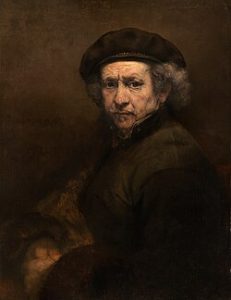Rembrandt Harmenszoon van Rijn was one of the greatest painters and printmakers in European art history, celebrated for his unparalleled mastery of light, shadow, and human emotion. Born in Leiden, Netherlands, Rembrandt trained under local masters before establishing a successful career in Amsterdam, where he became the leading portraitist of the Dutch Golden Age.
Rembrandt’s work spans historical scenes, landscapes, self-portraits, and biblical narratives, all marked by his innovative use of chiaroscuro — the dramatic contrast of light and dark — to heighten psychological depth and storytelling. His celebrated paintings, such as The Night Watch (1642) and The Anatomy Lesson of Dr. Nicolaes Tulp (1632), revolutionized group portraiture by imbuing them with movement, tension, and life.
In addition to painting, Rembrandt was a groundbreaking printmaker, elevating etching and drypoint to new artistic heights. His prints remain some of the most collected and studied works in art history for their technical brilliance and intimate, often experimental quality.
Despite personal tragedy and financial hardship later in life, Rembrandt produced a body of work that profoundly shaped the development of Western art. His legacy endures as a master of human expression, whose ability to reveal the soul of his subjects continues to inspire artists and audiences worldwide.
